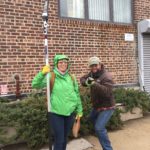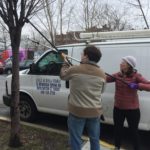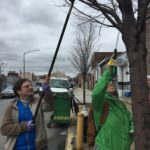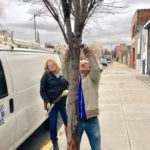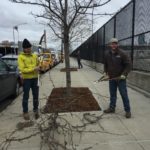THE LEAFLET
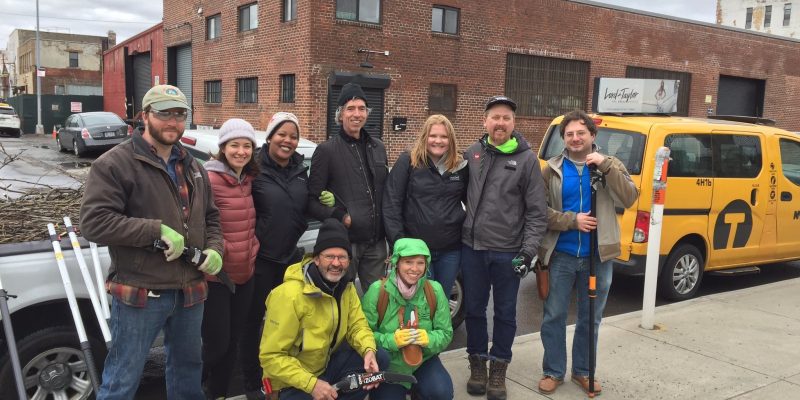
Collective Knowledge: Why Casey Trees and UFA Road Tripped to Trees NY
Did you know we have a pilot Citizen Pruner Program with the Urban Forestry Administration (UFA)? The goal of this program is to help us execute the ‘protect’ part of our mission to restore, enhance, and protect the tree canopy of D.C. Members of our education and tree planting team recently headed to New York City to learn a few tips and tricks of the trade from Trees New York, which has a thriving Citizen Pruners program.
Laura Bassett, Acting Director Education, noted that “when we launched a pilot pruning corps program this year in partnership with the Urban Forestry Administration, we’re really excited to work with the city and our volunteers to care for street trees.” However, when designing the pilot the team soon realized this was a perfect opportunity for industry collaboration. Trees New York and New York City has a citizen pruner program that has been around for over 40 years. It was the perfect opportunity for Casey Trees and UFA to road trip to New York to learn about their program, participate in a volunteer event, and meet their volunteers.
Little did everyone know how much they would learn! Volunteer Coordinator Erica Young was especially interested in amazing tree mapping website/program, where residents are able to click on individual street trees in their neighborhood and learn about the impact that tree is making in terms of stormwater, air quality, and more.
While the Pruning Corps is still a pilot program, Casey Trees and UFA have lofty visions. Steve McKindley-Ward, an Urban Forester from UFA wants “volunteer street tree pruners who will be trained to identify structural problems in young trees—and nip those problems “in the bud” with judicious pruning cuts, thus heading off future architectural problems along the streets of D.C.” A couple of old adages come to mind when thinking about Steve’s goals for the program: An ounce of prevention is worth a pound of cure and a stitch in time saves nine. He elaborates, “if we can spot potential issues and prune them out of the tree this year with trained volunteers, 10-20 years later that will translate into a much larger limb NOT splitting off in a storm—because corrective, pro-active measures were taken early in the tree’s life.”
The great news is we’ve rallied together to increase our tree canopy by planting tens of thousands of trees over the last few years. The not so great news is that life is tough for an urban street tree and they need people to help care for them. Laura and Erica echo Steve’s vision by saying, “our volunteers can prune these young trees to encourage good branch structure so they live to become canopy trees.”
Ultimately Laura noted, “I think this trip underscored the importance of strong partnerships in caring for our urban forest. Uniting the efforts of the community with the efforts of city arborists and nonprofit groups creates powerful results. The pruning program is another opportunity to build a community in D.C. that will continue to care for our urban trees.”
Cheers to that!
